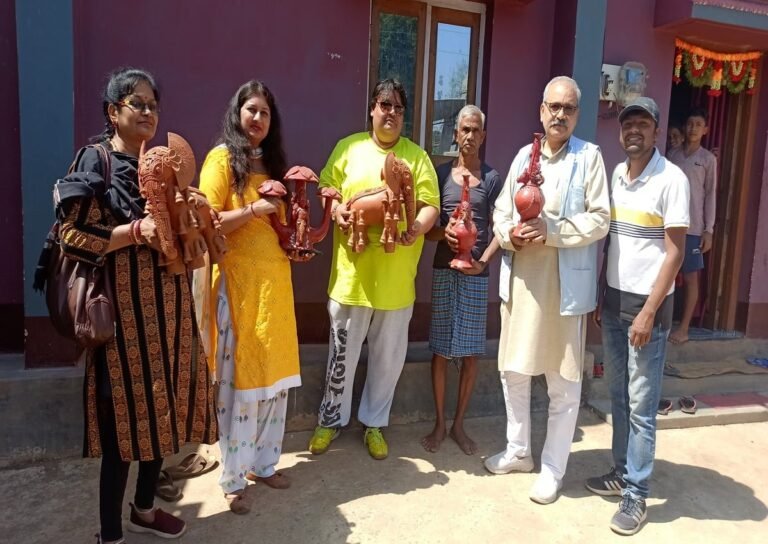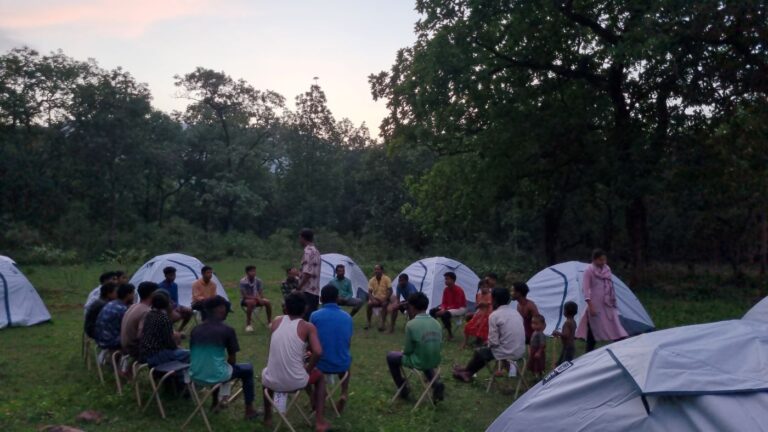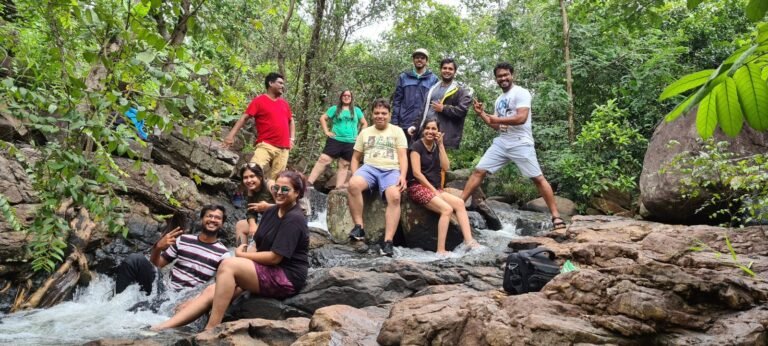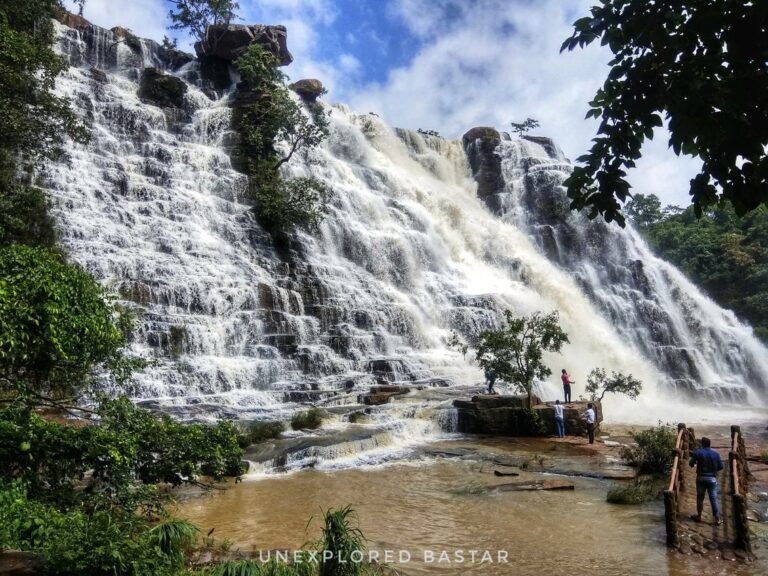The Historical City of Bastar – “Barsoor” | Unexplored Bastar
Written by B. Bindu
BATTISA TEMPLE

Leftwards, on the entrance to Barsur, Battisa Temple can be seen in ruins. According to the inscriptions, this temple was constructed back in 1030c. by the Queen of Nagavanshiya ruler Someshwar Dev. Due to the usage of 32 stone pillars in this temple, it became well-known as Battisa Mandir Gudi. It has two garbhagriha and the huge mandapa is built of stone blocks. A beautifully sculptured Nandi sits outside, facing the garbhagriha. The architecture of this 11th-century temple is awe-inspiring. At present, it has been declared as preserved by the state government.
MAMA BANCHA TEMPLE
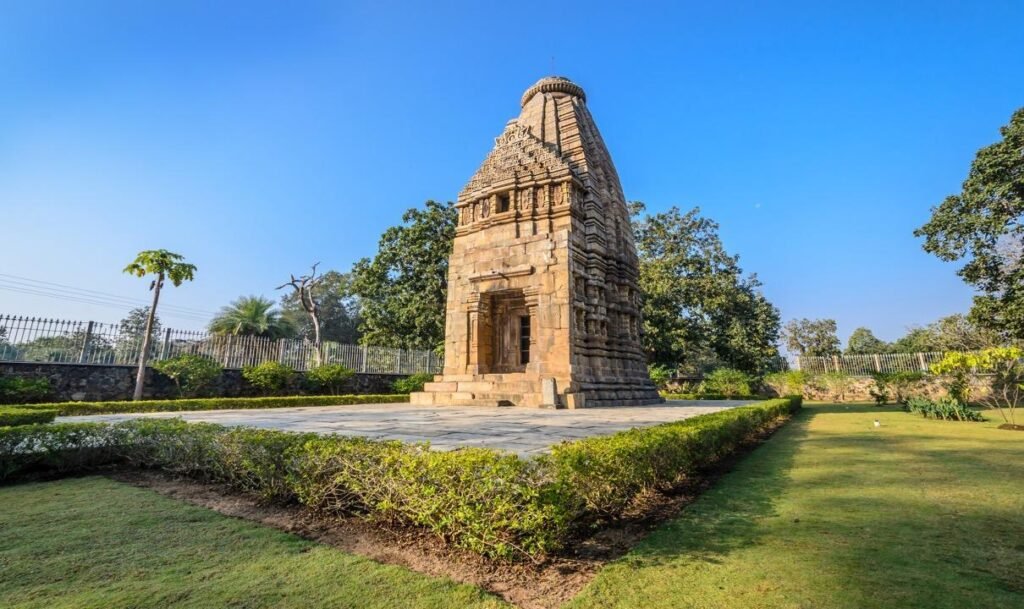
Constructed in the 11th century, this temple is the contemporary of Khajuraho temple. According to a folklore, the nephew(Bancha) of Gangavanshiya ruler was wise. He called a mason from Utkal and constructed the temple, being jealous of its grandiose, the ruler fought against his own nephew. The nephew cut his(king) head and put it in this temple. This temple is in medium condition and its architecture is very magnificent.
CHANDRADITYA TEMPLE
An inscription of Barsur dated shak sanvat. 983 is in Telugu script, which states Mahamandaleshwar Chandraditya Maharaj, a feudatory chief of Nagavanshiya ruler ‘Dharavarsha’, was the head of Telugu Chodd family and Amma village. He excavated a tank and built this Shiv temple at its centre. He bought a village from Rajadhiraja and donated it to carry out the expenses of temple construction.
Chandraditya Temple, at present, is in medium condition, with its magnificent and alluring architecture.
GANESH IDOL

Nearby Battisha Temple, leftwards 1 km away, there are two Ganesha sculptures, dating back to 11th–12th century. They are huge and their architecture is extremely magnificent. Glancing at the larger one, our head gets automatically bowed down with faith. But the top of the smaller one beside it is split. Presently, the larger one is kept preserved. A stone kalash is kept atop a Mandap, constructed from stone pillars and boulders. People call it Amrit Kalash. Close-at-hand a heap of stone blocks indicate the remnants of an ancient temple. Possibly, an ancient temple was situated there.
Twin Ganesha is famous for its historical significance. The city Barsur is named after king Banasur, who was a great devotee of Lord Shiva. It is said that daughters of Banasur, Usha and his minister’s daughter Chitralekha were best friends. They were the devotee of Ganesha. So they asked their fathers to construct a temple for them. They created this twin Ganesha temple of Barsur.
HISTORY AND ARCHAEOLOGICAL IMPORTANCE OF BARSOOR
Among the places of ancient and archaeological importance, Barsur is one of the ancient cities and was the capital of Nagavanshi kings. Many inscriptions and coins circulated by Nala dynasty kings have been found in Chhattisgarh and Dandakaranya region. During the reign of Nalavanshi king Bhavdatt Varman, he gained victory over many places of Southern Bastar. The exact date of victory is uncertain, but it is mentioned in Madhya Pradesh archaeological page no.389; according to it, the period is 470 B. C. In 850 c.the Gangavanshi ruler of Odisha entered victorious into Dandakaranya region. According to Pt. Kedarnath Thakur, king “Jagannathpuri was Gangavanshi. He had 6 auras putra (lawful sons) and 1 dasi putra. For certain reasons, the king handed over his kingdom to his dasi putra and established his own kingdom elsewhere with his 6 sons. One of the sons started ruling over Bastar”. Gangavanshi rulers made village ‘Barsur’ on the banks of river Indravati, their kingdom. On the banks of river Indravati, remnants of the then capital and Raj Bhawan can still be seen. Gangavanshi rulers constructed many temples in Barsur, among them Mama Bancha temple is still in good condition. In 11th century, Nagavanshi rulers gained victory over Gangavanshi rulers and they also made Barsur their capital.
In due course of time, Nagavanshi ruler Jagdeshbhusan Dharavarsha transferred his capital from Barsur to Taaralpal-present day Dantewada. During this period, many rulers constructed temples and excavated lakes in Barsur. The last Nagavanshi ruler Harishchandra was defeated by the ruler of Kakatiya dynasty, Raja Annamdev. Thereafter, the glory of Bastar diminished. At present, in Barsur, Mama Bancha temple, Chandraditya temple, Battishakhamba temple, Grand Ganesha Idol, extended lakes of 11th century are worth visiting. Nearby on river Indravati, 7 tributaries constitute SaathDhar, which provides alluring view. Central Government with the help of World Bank, had started building Indira hydro-electric project, but due to some reasons it is laying incomplete and processes are undergoing to start it again.
From tourism perspective, Barsur has many important places. Geedam is situated on NH-16, 74 kms away from Jagdalpur. Northwards, 20 kms away from Geedam, Barsur is situated. In ancient times, Barsur was a glorious city. ‘Barsur’ word is considered as apbhransh of Balsurya. Shri Kedarnath Thakur, writer of Bastar Bhushan, accords ‘Balsurya’ to be well-known as ‘Barsur Garh’, where remnants of fort are still found at Indravati banks. All around Barsur, many temples and lakes were constructed in an area of 8 miles. Earlier, 147 grand temples, 147 lakes and many small temples were present here, out of which only 5-6 temples and lakes have survived today.
Uncover Barsoor’s ancient charm—explore centuries-old temples, serene ponds, and rich history in this lost city by the Indravati River.



